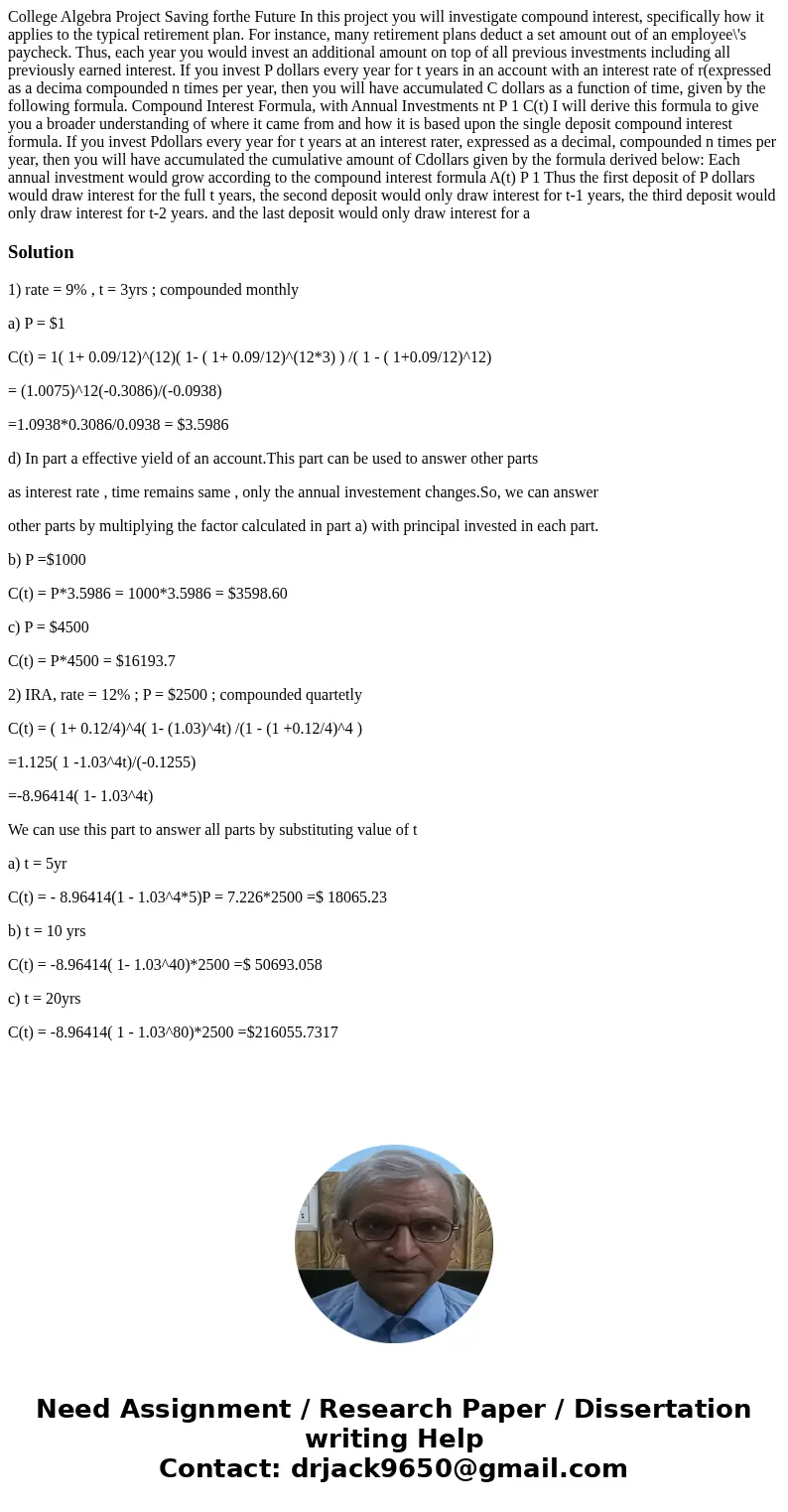College Algebra Project Saving forthe Future In this project you will investigate compound interest, specifically how it applies to the typical retirement plan. For instance, many retirement plans deduct a set amount out of an employee\'s paycheck. Thus, each year you would invest an additional amount on top of all previous investments including all previously earned interest. If you invest P dollars every year for t years in an account with an interest rate of r(expressed as a decima compounded n times per year, then you will have accumulated C dollars as a function of time, given by the following formula. Compound Interest Formula, with Annual Investments nt P 1 C(t) I will derive this formula to give you a broader understanding of where it came from and how it is based upon the single deposit compound interest formula. If you invest Pdollars every year for t years at an interest rater, expressed as a decimal, compounded n times per year, then you will have accumulated the cumulative amount of Cdollars given by the formula derived below: Each annual investment would grow according to the compound interest formula A(t) P 1 Thus the first deposit of P dollars would draw interest for the full t years, the second deposit would only draw interest for t-1 years, the third deposit would only draw interest for t-2 years. and the last deposit would only draw interest for a
1) rate = 9% , t = 3yrs ; compounded monthly
a) P = $1
C(t) = 1( 1+ 0.09/12)^(12)( 1- ( 1+ 0.09/12)^(12*3) ) /( 1 - ( 1+0.09/12)^12)
= (1.0075)^12(-0.3086)/(-0.0938)
=1.0938*0.3086/0.0938 = $3.5986
d) In part a effective yield of an account.This part can be used to answer other parts
as interest rate , time remains same , only the annual investement changes.So, we can answer
other parts by multiplying the factor calculated in part a) with principal invested in each part.
b) P =$1000
C(t) = P*3.5986 = 1000*3.5986 = $3598.60
c) P = $4500
C(t) = P*4500 = $16193.7
2) IRA, rate = 12% ; P = $2500 ; compounded quartetly
C(t) = ( 1+ 0.12/4)^4( 1- (1.03)^4t) /(1 - (1 +0.12/4)^4 )
=1.125( 1 -1.03^4t)/(-0.1255)
=-8.96414( 1- 1.03^4t)
We can use this part to answer all parts by substituting value of t
a) t = 5yr
C(t) = - 8.96414(1 - 1.03^4*5)P = 7.226*2500 =$ 18065.23
b) t = 10 yrs
C(t) = -8.96414( 1- 1.03^40)*2500 =$ 50693.058
c) t = 20yrs
C(t) = -8.96414( 1 - 1.03^80)*2500 =$216055.7317

 Homework Sourse
Homework Sourse